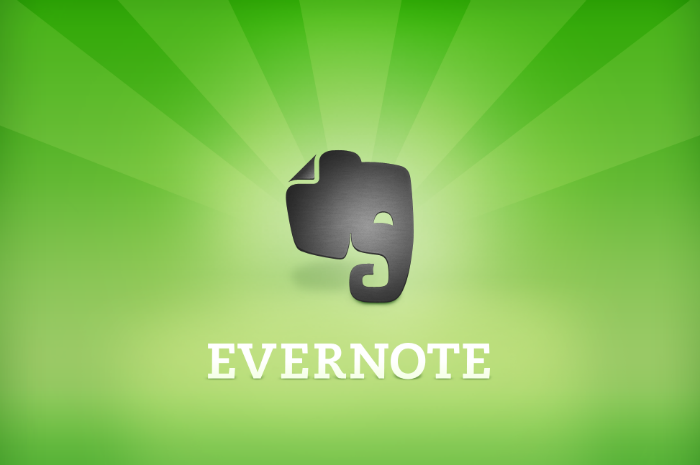
Evernote is a free note-taking app that offers an incredible amount of depth. You can either use it as a simple shopping/to-do list, or it can become the central storage plexus for every useful piece of information in your life.
The core of Evernote revolves around two things: Notebooks, and the Notes you file within them.
 Notebooks
Notebooks
Notebooks are kind of like folders. They’re created by you for your specific needs and let you to organise your notes in groups.
You must select one Notebook to be your default. This is where all new notes will be automatically filed, unless otherwise specified when they’re created.
You can also create notes from within a specific notebook, which negates the default notebook.
Most people tend to make their “Daily to-do” notebook the default. This is where you would keep your shopping list, as well as anything else you need to get done that day.
An example of a more long-term Notebook is recipes. Evernote is a great place to store awesome meals you run in to either online or in real life.
“Wish List” is also another great one; if you don’t have the money now but find something you’d like to buy later, file it away. Then, once you have money, you can consult your Wish List notebook and see if anything still strikes your fancy.
Notes
Notes are usually predominantly text, and can be formatted much to the degree that a Word document can.
Notes can also contain pictures, audio, tags (created by your for grouping), hyperlinks, geo-tags, and an info section. You can also save whole web-pages and articles to a note using the Evernote Web Clipper extension.
Web Clipper
Web Clipper is the most under-utilised part of Evernote. It’s a browser extension that allows you to record info from web pages. You can save the page as a full Article, a Simplified Article, the Full Page, a Bookmark or as a Screenshot.
Each mode has its own uses and can be learned by simply playing around with the features.
Recommendations
Ever wake up the morning after a night out and vaguely remember getting excited about something someone told you about, but can’t for the life of you remember what it is?
Make yourself a Recommendations notebook in Evernote and store that info as you’re getting it. It might seem rude to pause a conversation to pull out your phone, but if you explain to your conversation partner that you’re writing down their suggestion for future reference then nine times out of ten they’ll be more than happy to repeat it for you.
You end up potentially learning about something new and the person who recommended it to you feels like their suggestion has been actually appreciated.
Other stuff
The Evernote rabbit hole goes too deep for a quick guide covering everything. We’ll go in to how to get the most out of Evernote later. For now we’ll just cover the rest of the uses as simply as possible.
Business Cards: Evernote is equipped with an optical character reader. This means that not only can you take a pic of a business card and store it in a notebook, but you can even use the search function to locate those contacts based on what’s written on the card. You can also use tags to group different kinds of cards in their own categories.
Receipts: The optical reader once again comes in to play here. You don’t have to worry about losing receipts if you upload them as images to a Receipts notebook.
Audio: You can record audio files right in to a note. This can even be done while you’re writing notes manually. Unfortunately, what you write doesn’t create a timestamp on the audio file itself, but it’s still a very useful feature for meetings, lectures or interviews.
Customisation: You can arrange your notes in a variety of ways. It’s not so much a built-in system that lets you shuffle things around; rather it depends on how you make notes and how you decide to file them. Some people opt for one or two notebooks and rely on tags to find what they need. Others make heaps of notebooks and use relatively few tags. For such a simple system, it’s surprising how much you can tailor your Evernote experience to your specific needs.
Related Articles
Find Better Phones and Plans
Hundreds of cell phone plans unpacked. All the facts. No surprises.



































